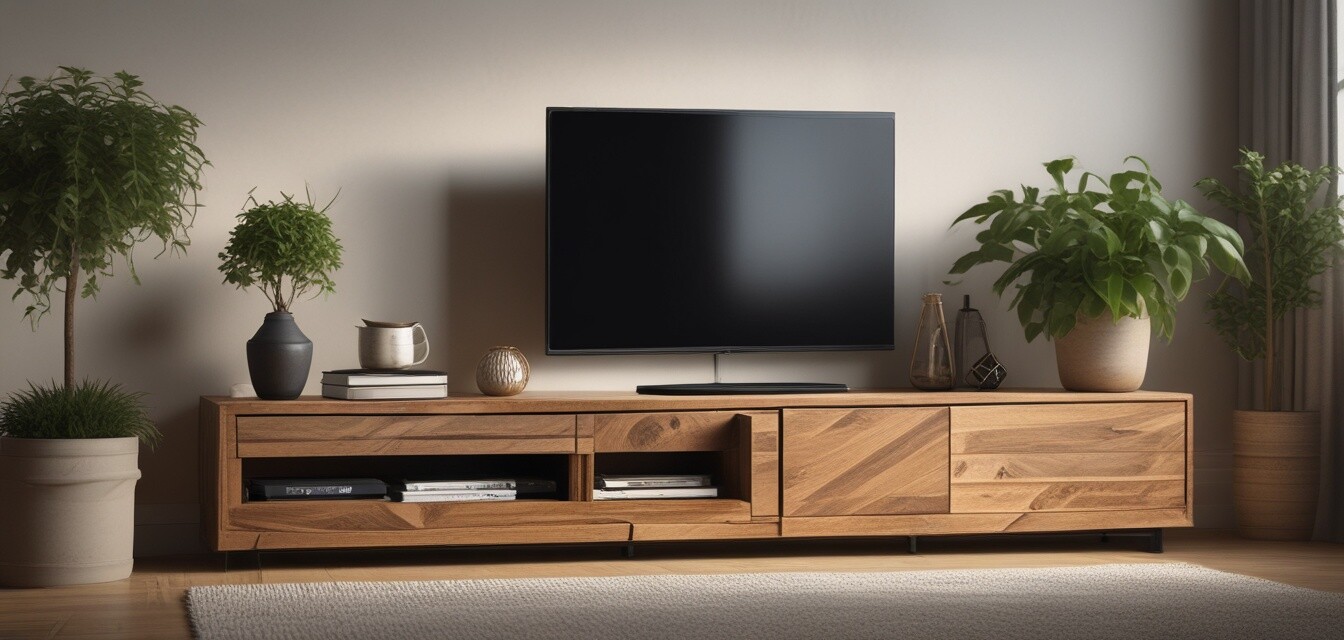
DIY Eco-Friendly TV Stand Ideas
Key Takeaways
- Transforming reclaimed wood or pallets can create unique TV stands.
- Using repurposed materials reduces waste and promotes sustainability.
- Customize your TV stand to fit your style and space needs.
- Incorporate natural finishes to enhance the aesthetic appeal.
- Mindful purchasing of materials contributes to a greener lifestyle.
Are you looking to enhance your living space with a stylish and eco-friendly TV stand? DIY projects can be a great way to express your creativity while contributing to a sustainable future. Let's explore some creative ideas for building your own eco-friendly TV stand, using sustainable materials that not only look great but also reduce your carbon footprint.
Why Choose Eco-Friendly Materials?
Using eco-friendly materials in your DIY projects is essential for creating a sustainable home. Here are some reasons to consider:
- Reduced environmental impact: Sustainable materials like reclaimed wood, bamboo, or recycled metal help minimize pollution and resource depletion.
- Durability: Often, eco-friendly materials are more durable, which means your creations can last longer, ultimately reducing waste.
- Healthier indoor air quality: Sustainable materials often have lower levels of harmful chemicals compared to conventional materials.
Creative DIY Ideas for Eco-Friendly TV Stands
1. Reclaimed Wood TV Stand
Using reclaimed wood not only adds character to your space but also promotes sustainability. Here's how you can create your own:
- Find reclaimed wood from old furniture, barns, or pallets.
- Sand down the wood to remove rough edges and stains.
- Create a simple structure with shelves to hold your TV and media equipment.
- Finish with natural oils or stains for a polished look.
2. Pallet TV Stand
Pallets can be transformed into functional and stylish TV stands. Follow these steps:
- Source clean pallets from local suppliers or stores.
- Disassemble the pallets and choose the best pieces for your stand.
- Assemble the pallets into a custom frame, ensuring stability.
- Add wheels for mobility and ease of use.
3. Bamboo Stand
Bamboo is a fast-growing, renewable resource that’s perfect for sustainable furniture. To make a bamboo TV stand:
- Purchase bamboo boards from a local supplier.
- Cut the bamboo to your desired dimensions for the stand.
- Assemble using eco-friendly adhesives and screws.
- Seal with a natural finish to enhance the bamboo’s appearance.
4. Modular TV Stands
Modular designs allow flexibility and creative storage solutions. Try this approach:
- Use recycled or upcycled materials for each module.
- Design modules that can be rearranged based on your space.
- Add hidden storage solutions for an organized setup.
5. Metal and Glass Stand
Combine recycled metals with sustainable glass to create a modern TV stand:
- Gather recycled metal frames and tempered glass.
- Assemble a frame that holds the glass securely.
- Finish with non-toxic paint or coatings if necessary.
Tips for Your DIY Project
- Always prioritize safety when handling power tools and materials.
- Consider the weight of your TV and ensure your stand is sturdy enough to support it.
- Use eco-friendly finishes to maintain the sustainability of your stand.
- Experiment with colors and designs that match your existing decor.
Where to Buy Eco-Friendly Materials
Finding sustainable materials can be easier than you think. Here are some options:
- Local salvage yards for reclaimed wood.
- Home improvement stores often carry sustainable materials.
- Online marketplaces for recycled or eco-friendly products.
Final Thoughts
Creating a DIY eco-friendly TV stand is not only a fun project but also an excellent way to contribute to a sustainable lifestyle. By using reclaimed materials and ensuring your processes are environmentally conscious, you can build a unique piece that showcases your creativity while being kind to the planet. Embrace the journey of DIY and let your imagination lead the way!
Pros
- Creates a unique piece tailored to your style.
- Promotes sustainable living and environmental responsibility.
- Can be cost-effective compared to purchasing new furniture.
- Encourages creativity and personal expression.
Cons
- Requires time and effort to complete.
- May need tools and materials that some homeowners do not have.
- Potential for mistakes if you're new to DIY projects.